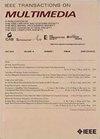Generative Adversarial Networks for Biomedical Imaging
IF 2.3
4区 计算机科学
Q2 COMPUTER SCIENCE, HARDWARE & ARCHITECTURE
引用次数: 0
Abstract
GANs are a class of machine learning framework that are used to generate new data instances that resemble the training data. First proposed by Goodfellow et al.,1 the GAN architecture (Figure 1) typically consists of two separate competing adversarial neural networks that learn from each other. The two neural networks in a GAN model are a generator model, which creates new synthetic data samples, and a discriminator model, which evaluates the synthetic samples generated by the generator model against real data samples. The evaluation of synthetic data by the discriminator helps the generator create better and more realistic, accurate samples. As the generator improves, so does the discriminator, enabling effective learning with the aim of producing synthetic data that are so realistic that the discriminator cannot tell if they are real or fake.用于生物医学成像的生成对抗网络
GAN 是一类机器学习框架,用于生成与训练数据相似的新数据实例。GAN 架构(图 1)由 Goodfellow 等人1 首次提出,通常由两个相互竞争、相互学习的对抗神经网络组成。GAN 模型中的两个神经网络分别是生成器模型和判别器模型,前者负责创建新的合成数据样本,后者负责将生成器模型生成的合成样本与真实数据样本进行对比评估。鉴别器对合成数据的评估有助于生成器创建更好、更真实、更准确的样本。随着生成器的改进,鉴别器也会随之改进,从而实现有效的学习,目的是生成逼真到鉴别器无法辨别真假的合成数据。
本文章由计算机程序翻译,如有差异,请以英文原文为准。
求助全文
约1分钟内获得全文
求助全文
来源期刊

IEEE MultiMedia
工程技术-计算机:理论方法
CiteScore
6.40
自引率
3.10%
发文量
59
审稿时长
>12 weeks
期刊介绍:
The magazine contains technical information covering a broad range of issues in multimedia systems and applications. Articles discuss research as well as advanced practice in hardware/software and are expected to span the range from theory to working systems. Especially encouraged are papers discussing experiences with new or advanced systems and subsystems. To avoid unnecessary overlap with existing publications, acceptable papers must have a significant focus on aspects unique to multimedia systems and applications. These aspects are likely to be related to the special needs of multimedia information compared to other electronic data, for example, the size requirements of digital media and the importance of time in the representation of such media. The following list is not exhaustive, but is representative of the topics that are covered: Hardware and software for media compression, coding & processing; Media representations & standards for storage, editing, interchange, transmission & presentation; Hardware platforms supporting multimedia applications; Operating systems suitable for multimedia applications; Storage devices & technologies for multimedia information; Network technologies, protocols, architectures & delivery techniques intended for multimedia; Synchronization issues; Multimedia databases; Formalisms for multimedia information systems & applications; Programming paradigms & languages for multimedia; Multimedia user interfaces; Media creation integration editing & management; Creation & modification of multimedia applications.
 求助内容:
求助内容: 应助结果提醒方式:
应助结果提醒方式:


